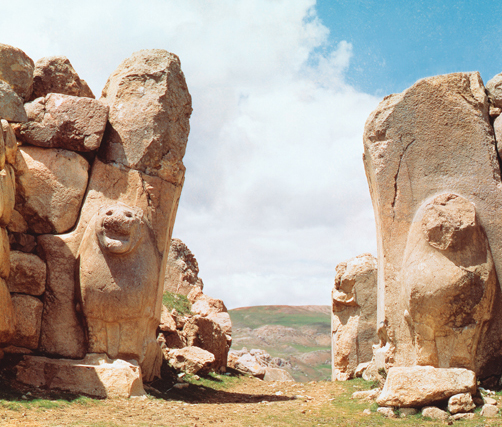Image Details

Scala/Art Resource, NY
Imposing stone lions guard the gates of the ancient Hittite capital of Hattusa, about 125 miles east of modern Ankara. Around 1400 B.C.E., Hattusa was an enormous Late Bronze Age city filled with palaces, a temple complex and a library with 3,000 cuneiform tablets. Its rock-and-brick perimeter walls ran for 6 miles around the city. Just 200 years later, however, the Hittite capital—along with other major cities of the Late Bronze Age civilizations of the Aegean and eastern Mediterranean—lay abandoned and in ruins.
What caused this widespread collapse, which was then followed by a 150-year-long “Dark Age”? Scholars point to prolonged droughts, wars, invasions by the Sea Peoples and accumulating economic tensions. In the accompanying article, “Earthquake Storms,” authors Amos Nur and Eric H. Cline argue that sequences of earthquakes may have caused a larger collapse of political and economic systems.
